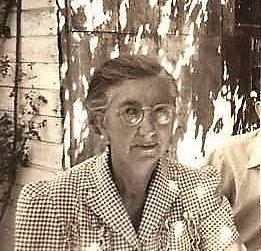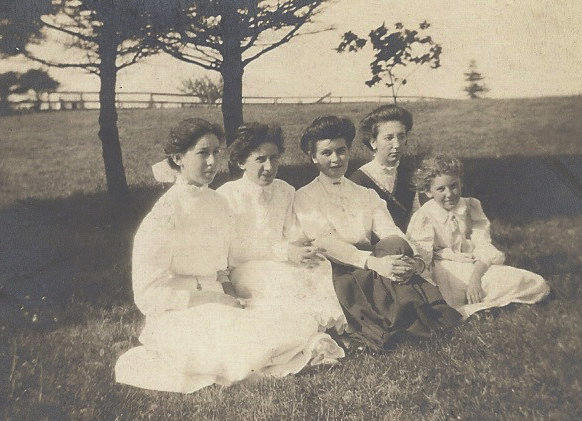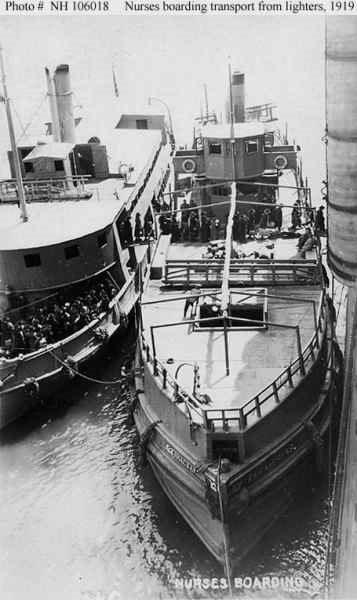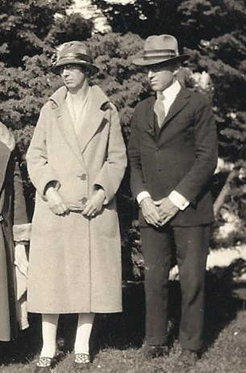
copyright © Wartime Heritage Association
Website hosting courtesy of Register.com - a web.com company
Wartime Heritage
ASSOCIATION
Remembering World War I
Yarmouth Connections

Dorothy Fox
Name:
Rank
Battalion/Service
Date of Birth:
Place of Birth:
Date of Enlistment:
Place of Enlistment:
Date of Death:
Dorothy Gayton Fox
Nurse
US Army Nursing Corps,
American Expeditionary Force
December 23, 1889
Pubnico, NS
December 5, 1917
Canton, Massachusetts
October 17, 1952

Dorothy Fox was born in Pubnico, Yarmouth County, Nova Scotia, two days before Christmas, on December 23, 1889 to
Deidamia Ann “Annie” (Gayton) Fox (August 27, 1861 - May 27, 1917) and Charles James Fox (February 11, 1851 - March 24,
1937).
She had seven siblings; Leslie (1886-1918), Marie (1887-1984), Charles James (1888-1940), Lyle Cleveland (1891-1960),
Annie G Fox (1893-1987), Eunice (1898-1995) and a half-sister; Mary A (born in 1878).
At the age of 21 she moved to Massachusetts in July of 1910 to begin nursing school at the Malden Hospital in Malden,
Massachusetts.
She began her military service in nursing December 5, 1917 in Canton, Norfolk, Massachusetts. By December 10, she had
reported to duty at the Base Hospital at Camp Sevier, Greenville County, South Carolina.
On May 17, 1918, she left Camp Sevier to initially proceed to New Jersey and on to New York to await transportation to
Europe. May 20th she reported to the Commanding General at Hoboken, New Jersey, which was to be their port of
embarkation for France. She then proceeded, on June 11th to the Holley Chambers Hotel at Washington Square West, New York
City, New York. The hotel was used as the Nurses Mobilization Center; one of a chain of hotels in New York City with which the
Government contracted.
The picture of the Army nurses loading on to a ship from the
ferry is from May 18, 1919.
They then departed Europe aboard SS Prinz Friedrich Wilhelm
(ID4063) to New York City.
Dorothy arrived in New York May 27, 1919 returning to the
Nurses Demobilization Station at Hotel Albert in New York City, New
York.
July 14, 1920, Dorothy Fox received the Victory Medal. As a
constituent part of the Army, any Army nurse who served on active
duty between April 6, 1917, and November 11, 1918, whose service
was honorable, was entitled to the Victory Medal.
“The treatment, pay and recognition of nurses in the First World
War varied. Two varying degrees, British and Canadians had given
their nurses “relative rank.” That meant that the women were called
Lieutenant or Captain, and they were respected by officers and
enlisted men alike, although they did not get the same pay or
privileges of men of the same rank and were not given command
authority over men. The Army Nurse Corps of the US did not receive
relative rank until after WWI and after a major lobbying effort on the
part of all nursing organizations teaming up with women's colleges
and associations. By 1920, women would have the right to vote and
nurses had relative rank; both in part awarded for the special roles
women had played during the war. The Army Nursing Corps would keep
“relative rank” until the middle of WWII even though other women in
the US Army (Women's Army Corps WAC) and the US Navy (WAVES) were getting the same pay as men. Permanent commissions
with full benefits and privileges of rank were not given until 1947.
Most American nurses during the First World War were registered and processed by the Red Cross. They then served
with the Army, Navy, or the Red Cross in overseas hospitals organized and financed by the Red Cross. Some nurses did not
know if they were army, navy or Red Cross nurses. The largest difference was that military nurse reservists were eligible for
disability benefits if they were wounded or injured while in Europe; Red Cross nurses were not. Many patients referred to all
nurses as Red Cross nurses. Regardless of all this, these US nurses made a difference in the lives of thousands od soldiers,
sailors, and Marines. A fitting tribute to these dedicated courageous nurses of WWI was the British song which called them
“The Rose(s) of No Man's Land.”*
Dorothy travelled to Blaine, Washington State, United States on July 24, 1920, as
reported by ship records.
In 1921 she resided in Los Angeles, California at 1024 South Hope Street, and may
have worked at the California Hospital Medical Center also located on 1414 South Hope
Street, less than a mile away from her residence along the same street.
Dorothy applied for US Citizenship (Petition #8232) September 4, 1925, and it was
granted approximately a year later.
She married Ray Daniel Perry (b. 1884) on June 26, 1926 at in Berkeley,
California. Dorothy and Ray lived in Berkeley throughout the period of 1930 and 1940.
They had two daughters and one son.
Dorothy Fox Perry passed away October 17, 1952 and was residing in a nursing
home at the time. She was predeceased by her husband two years earlier in 1950.
Dorothy Fox’s brother, Lieutenant Lyle Cleveland Fox, also served with the
Canadian Expeditionary Forces in the First World War. Her younger sister, Major Annie Gayton Fox, also served as nurse.
Having completed her training over the course of the First World War in 1918 she would go to serve as a US Army Corps nurse in
the Second World War and was the first women to earn in the Purple Heart for her service during the attack on Pearl Harbor.
Read her story at:

Timeline in Europe:
By July 8, 1918, Dorothy was in west-central France and reporting for duty at Base Hospital #24,
American Expeditionary Force, in Limoges, Haute-Vienne in the region of Limousin.
On January 18, 1919, Dorothy was sick in hospital at Evacuation Hospital #37 (Mars) in Mars-sur-Allers,
France before being sent to Evacuation Hospital #1 with Acute Bronchitis. Her confinement period last
from February 11th to the 16th, 1919. Evacuation Hospital #37 relieved Base Hospitals #48, #14, and
#35.
20 Jan 1919
Evacuation Hosp. #1, A.E.F., Argonna Forest, Sebastopol Barracks, north of Toul, France
Left Base Hospital #24, A.E.F. Orders to proceed to Evacuation Hosp. #1/#37, A.E.F., France. **It is
believed that Evacuation Hospital #1 was turned over to Evacuation #37. (One and the same) per pg 20
http://weezy.info/pdf/GrandmaMeChapter2.pdf
Returned to duty February 19, 1919, at Evacuation Hospital #1, A.E.F., Argonna Forest, Sebastopol
Barracks, North of Toul, France
On April 3, 1919, she received orders to report to the duty station, Evacuation Hospital #37.
On April 4, 1919, she reported to duty at Camp Hospital #8 at Montigny-le-Roi, Haute-Marne, (Hte. M.),
France. This was Northeast of Suilly, France.
On May 3 she left Camp Hospital #8 to proceed to the Hospital Center at Vannes (Morbihan), France for
return to the United States. She arrived at Headquarters Hospital Center, Vannes May 6, 1919, per order
for embarkation to the United States. American medical personnel gathered at the Hospital Centre in
preparation for their return home.
Dorothy then departed the Headquarters Hospital Centre May 14, 1919 to proceed to Brest, France for
embarkation; arriving near Brest, Finistere, Bretagne at Hospital Center Kerhuon (also known as Base
Hospital #65) as per orders.

Source:
*The United States in the First World War: An
Encyclopedia, Paul L. Miles

Dorothy Fox
Anne Fox, Marie Fox, Edna,
Dorothy, Eunice (1907)


- World War I - Menu
- WWI Stories and Articles
- Photos - Yarmouth Soldiers
- Selection of World War I Songs
- WWI Casualties of Yarmouth, NS
- Those Who Served - Yarmouth, NS
- WWI Casualties Digby Co. NS
- WWI Casualties Shelburne Co. NS
- Merchant Mariners (1915) Yarmouth, NS
- Canadian Forestry Corps - Non Yarmouth Birth/Residence Enlistments
- US Draft Registry - Yarmouth NS Born


- World War II - Menu
- WWII Stories and Articles
- Telegraphist Air Gunners
- WWII Casualties of Nova Scotia
- US Casualties with NS Connection
- Far East/Pacific Casualties with NS Connection
- Merchant Navy Casualties Nova Scotia
- Nova Scotia WWII Casualties Holten Canadian War Cemetery
- D-Day Casualties - Nova Scotia
- CANLOAN Program Casualties - Nova Scotia
- Battle of the Bulge Casualties - Nova Scotia
- WWII Casualties Yarmouth NS
- Yarmouth Casualties - RCAF RAF Canadian Army WWII
- Yarmouth Co., Marriages WWII
- Casualties Non-Born/Residents with Connection to Yarmouth Co., Nova Scotia.
- WWII Casualties Digby Co., NS
- Non-Nova Scotian WWII Casualties Buried in Nova Scotia
- WWII RCAF Casualties Aged 16-18
- Brothers/Sisters Who Served - World War II













